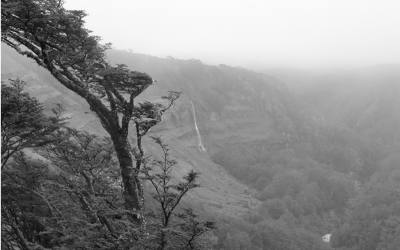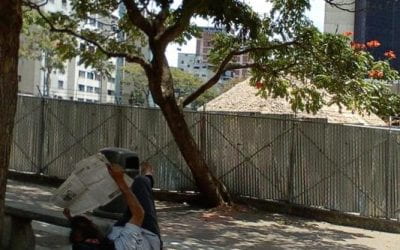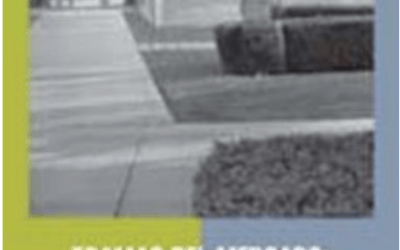Meditations on Venezuelan Culture Today
Living with Contradictions
As a Venezuelan, I can’t pretend that the nation has experienced idyllic moments at some point in our history. We Venezuelans also can’t deny that, in spite of many dark clouds, an accumulation of exasperation and disillusionment, a rash of tragedies and bitter pain suffered by our civic body—the incessant failure of the Venezuelan civilist impulse in the face of a country that is infrareal—we managed to arrive at a moment of agreement between historic opponents, making possible the republican chapter that began in 1961. This period’s status as a bourgeosie republic has been the subject of infinite discussions. But for now, it should be noted that the militaristic or populist regime that replaces it is a pure reaction to that past, unable to find the present.
Throughout the country’s history, with the exception of the recent republican interlude, resort to force has been constant. This tendency is closely associated with the failure of our collective ways of representing ourselves. Some form of representation is what we have called a “lettered republic,” a purely nominal concept that officially dominated our nation’s history during the entire 19th century and much of the 20th.
It’s not enough that the law acquire force to be obeyed. Force has to be put on standby so that its representations—signs of legitimately constituted authority, collective consensual narratives, emblems of the republic—substitute for force in its constituent and grounding effects. Power in Venezuela has suffered symbolic deflation. The only narratives, the only images that we have accepted as foundational, were trampled upon by anti-republican regimes, by those who carried out a permanent state of exception. Our democracy, obsessed with offering us infrastructure, failed to offer us an imaginary, a vision. And that is the basic reason, the fatal combination, that explains the present victory of the infrareal country over the real country, with the well-known nominalism that barely covers up the brutal return to today’s ruling force that catapults us towards the past.
Living With Contradictions
Among the first depictions of power in Venezuela are two important works by Martín Tovar y Tovar, in which the favorite artist of three-time Venezuelan president Antonio Guzmán Blanco painted two different versions of the scene in which the independence of Venezuela is made definitive. The first of these is the celebrated Signing of the Declaration of Independence, a didactic and exemplary work that in many ways portrays our greatness and our contradictions. The other painting is less well-known and perhaps with fewer political intentions; symbolically, it is more hermetic, although simpler in a pictorial sense. In the Signing of the Declaration of Independence, Tovar included the dominant and primordial figure of founding father Francisco de Miranda, in a gesture of strategic anachronism. I’ve always thought that bolivarianism—this authoritarian national ideology coined by the dictators Guzmán and Juan Vicente Gómez and sanctioned as law by Hugo Chávez’s government—situates itself in the historic facts of the fall of Miranda just as it does in Guzmán’s fantasy of the symbolic resurrection of Miranda. There are two visible moments in this resurrection: the painting of the Signing of the Declaration of Independence, in which Miranda appears as a fundamental protagonist in a chapter from which he was absent; the second is later, accidental, but no less a part of the Guzmán’s symbolic arsenal, Miranda’s portrait in Arturo Michelena’s La Carraca. One of the questions that we have posed concerning this work has to do with its contradictory status of being Venezuela’s most famous heroic painting, but at the same time one that is the most vivid representation of the failure of all heroism. Here lies, without a doubt, one of the cultural keys to understanding Venezuela.
A good decade after painting the distinct depictions of the Signing of the Declaration of Independence, Martín Tovar y Tovar created a monumental painting–following our tradition of celebrations every ten years—in which he depicts energetic animal taming in the midst of the infinite level grounds of our Venezuelan Plains known as Los Llanos. The Plains Scene—known in Spanish as La Escena Llanera—is the landscape equivalent of the Signing of the Declaration of Independence. I am among those who believe that it is the foremost of our landscape depictions. La Escena Llanera is based on the representation of the myth of the plains, which owes much to Eduardo Blanco, Guzmán’s secretary and author of Venezuela Heróica. In the painting, one can observe, perhaps for the first time in our art, a landscape so immense that it can only be called, in the usage of the 19th century, sublime: evoking those things in the world that transcend the imagination. The painting’s plot is minimal: a bull has escaped and a jockey ropes him in from his high perch on an untamed horse, while an innumerable mass of other bulls and cows cover the entire horizon in the background.
A ray of light shines over the jockey. In the previously mentioned painting of the Signing of the Declaration of Independence, a similar ray of light illuminates the hand of the founding father who points out the table where the signing of our emancipation took place. This radiance is, without a doubt, symbolic; in the language of Venezuelan painting, light is emancipatory. The detail of the ray of light on the jockey who tames the rough bull in La Escena Llanera conveys how Venezuela is split into two countries with incessant, inconclusive, debilitating revisionism. One—that of the signing of the declaration—is a lettered country, thoughtful, inward-looking, fictitious, well-intentioned, in which the ideal world is decreed; the other is a rough country, untamed, infrareal, unimaginable, sublime, bloody. The first version has been sold at a bargain price and does not cease to be sold due to a failure of the law, at everyone’s expense; the other has been sold off in an episodic and brutal fashion because of the supremacy of force, also at everyone’s expense. Both countries have not ceased taunting each other and engaging in confrontation, the same as they have done with egalitarianism—almost always on the side of the law—and the authoritarianism that is the only political form of force in Venezuela.
The signers of the declaration of independence are literally carrying out a dream. Lulled to sleep in the brilliant splendor of utopian illusions, they cannot suspect that emancipation will not automatically follow from their acts. Outside is the infrareal arcadia—that is to say, the desert—where Miranda’s soldiers will flounder, the fantasies of Bolívar and—almost until today—all the faces of the law. On the other hand, in the plains painting, Tovar depicts an act of rough taming. To tame, to dominate, share the same etymological root as the word dominus, the master of the house, and domus, the house. To dominate is to make oneself the master of the land and to tame is to make one’s own house from unconquered land. When the dictator Gómez entrusted the building of his own family mausoleum to architect Antonio Malaussena, he ordered the inclusion of two scenes: one of a military parade and the other the rendering of a bull taming by sculptor Lorenzo González. In this fashion, Gómez stressed his own pragmatic policies of governing as if one were taming an animal.
Thus, in Venezuela the illusion of law never seems to stem from reality; the fiction of a lettered country has never permeated into reality to install itself in the place of its dreams and to transform the infrareal country into a real country—that is, a country that equally belongs to everyone. Excessive fondness of lettered fictions, for the eloquence of the law, that is to say, for the sound but not the true content, could make us believe that the Chávez government is somehow different. Yet, the government, while maintaining lettered fictions, is mainly concerned with taming and dominance, barely masking for now brute force
Related Articles
Editor’s Letter: Venezuela
Long, long ago before I ever saw the skyscrapers of Caracas, long before I ever fished for cachama in Barinas with Pedro and Aída, long before I ever dreamed of ReVista, let alone an issue on Venezuela, I heard a song.
Elections and Political Power: Challenges for the Opposition
English + Español
Next month’s elections will be an important benchmark in Venezuelan politics. On November 23, voters will go to the polls to elect 22 state governors and 355 mayors in as many municipalities, as well as choose the mayor of Caracas. The elections are taking place in a political environment influenced by the abrupt proclamation of 26 laws on July 31, the last day of President Chávez’s 18-month powers to issue emergency decrees …
A Review of Tramas del mercado: imaginación económica, cultura pública y literatura en el Chile de fines del siglo veinte
Luis Cárcamo-Huechante’s new book provides us with a convincing counter-narrative, at once nuanced and succinct, to three mainstream narratives of the neoliberal free market in Chile: those of monetarist economics, promotional politics, and literary bestsellers. It covers the Pinochet dictatorship (1973-90) and the transition to democracy from its official inauguration in 1988, with the victory of the Yes vote for a return in two years’…




